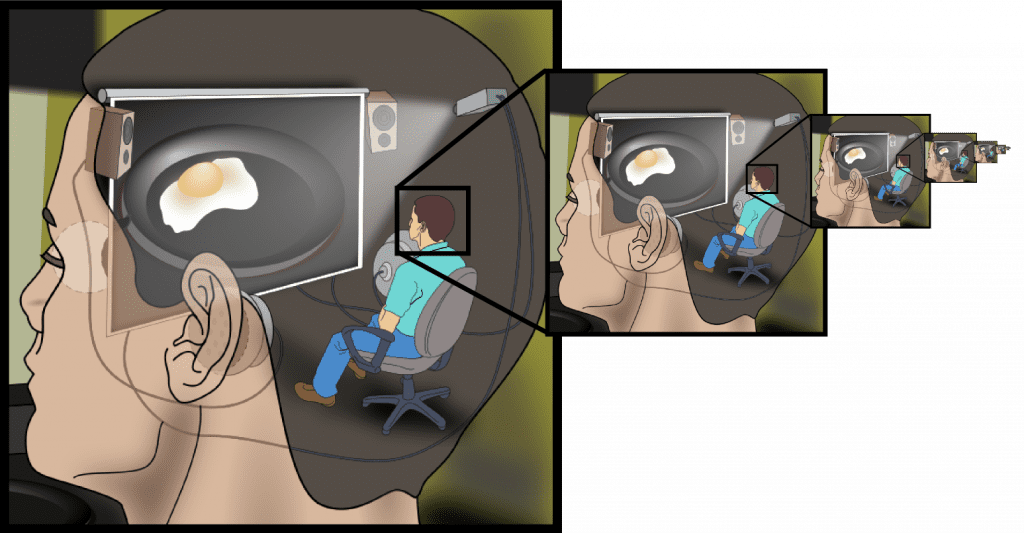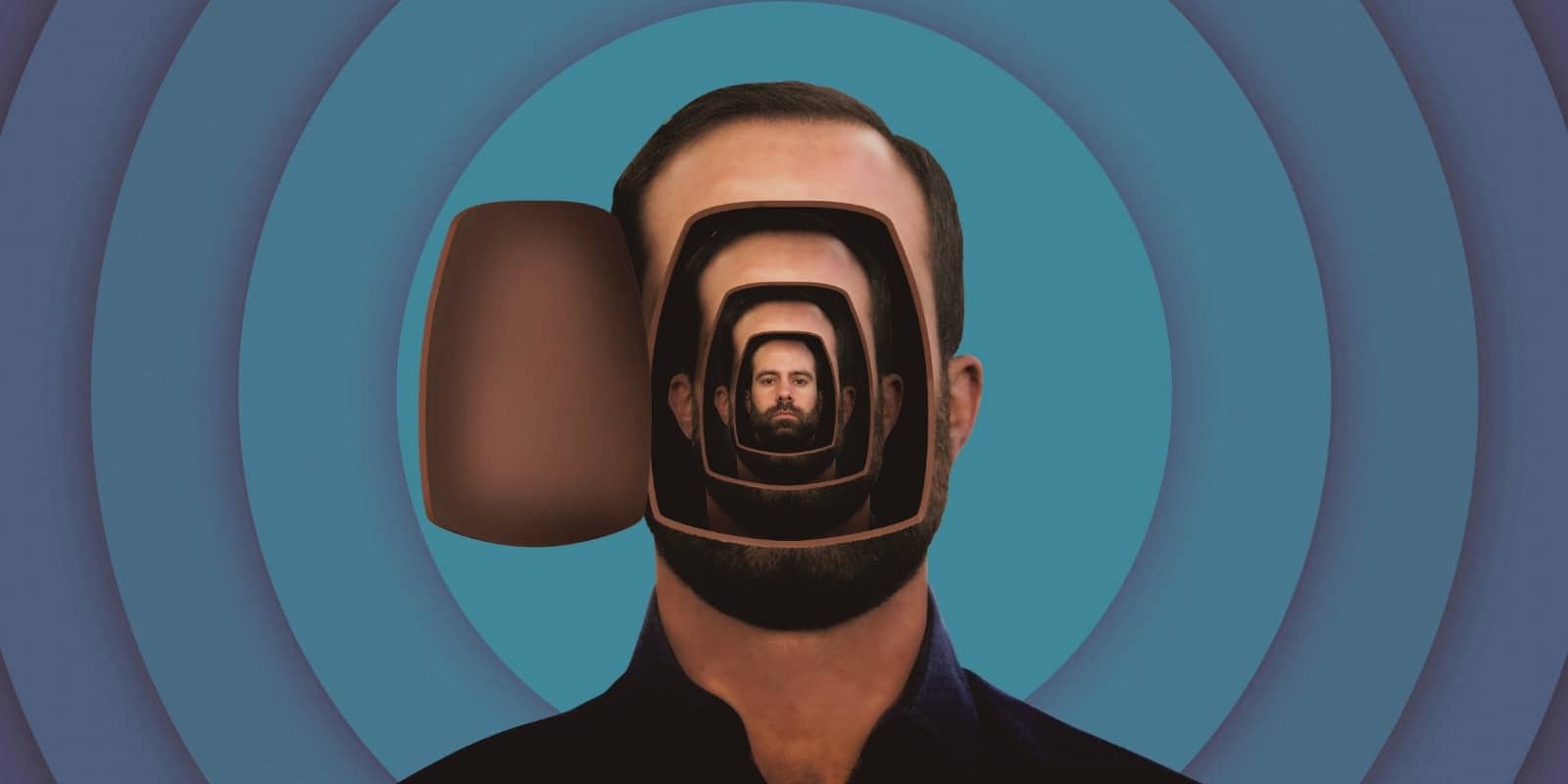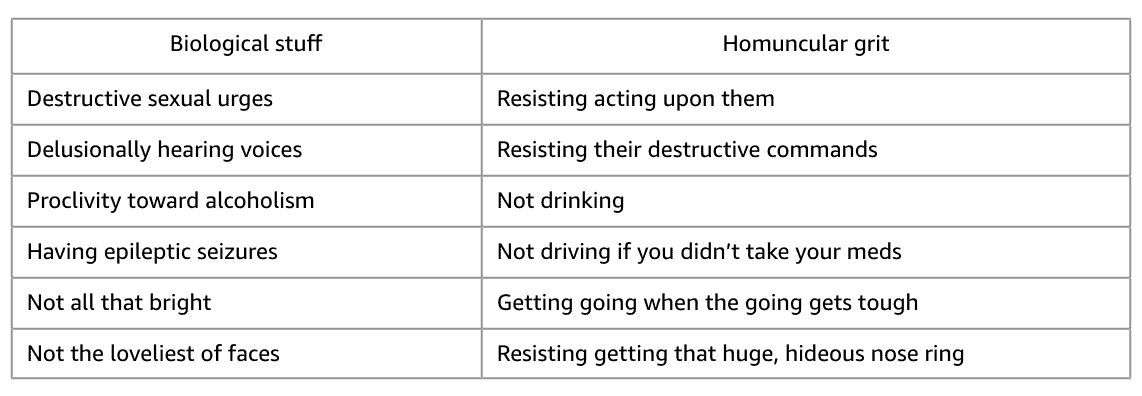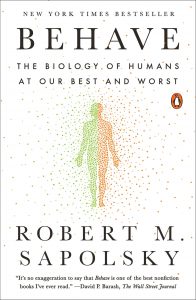This is a short excerpt from the book Behave by Robert Sapolsky (Amazon):
Before we get into Robert Sapolsky, here’s a quick description of homunculus and the homunculus fallacy:
Homunculus (Wikipedia): A representation of a small human being.
Homunculus Fallacy (Wikipedia): This fallacy arises most commonly in the theory of vision. One may explain human vision by noting that light from the outside world forms an image on the retinas in the eyes and something (or someone) in the brain looks at these images as if they are images on a movie screen (this theory of vision is sometimes termed the theory of the Cartesian theater). The question arises as to the nature of this internal viewer. The assumption here is that there is a “little man” or “homunculus” inside the brain “looking at” the movie. The reason why this is a fallacy may be understood by asking how the homunculus “sees” the internal movie. The obvious answer is that there is another homunculus inside the first homunculus’s “head” or “brain” looking at this “movie”. But that raises the question of how this homunculus sees the “outside world”. To answer that seems to require positing another homunculus inside this second homunculus’s head, and so forth. In other words, a situation of infinite regress is created. The problem with the homunculus argument is that it tries to account for a phenomenon in terms of the very phenomenon that it is supposed to explain.


The Homunculus Fallacy & Mitigated Free Will (Robert Sapolsky Short Excerpt)
Here’s Robert Sapolsky on how the homunculus relates to the biology of behavior and free will (emphasis added in bold):
“Here’s how I’ve always pictured mitigated free will: There’s the brain—neurons, synapses, neurotransmitters, receptors, brain-specific transcription factors, epigenetic effects, gene transpositions during neurogenesis. Aspects of brain function can be influenced by someone’s prenatal environment, genes, and hormones, whether their parents were authoritative or their culture egalitarian, whether they witnessed violence in childhood, when they had breakfast. It’s the whole shebang.”
“And then, separate from that, in a concrete bunker tucked away in the brain, sits a little man (or woman, or agendered individual), a homunculus at a control panel. The homunculus is made of a mixture of nanochips, old vacuum tubes, crinkly ancient parchment, stalactites of your mother’s admonishing voice, streaks of brimstone, rivets made out of gumption. In other words, not squishy biological brain yuck.”

“The homunculus sits there controlling behavior. There are some things outside its purview—seizures blow the homunculus’s fuses, requiring it to reboot the system and check for damaged files. Same with alcohol, Alzheimer’s disease, a severed spinal cord, hypoglycemic shock.”
“There are domains where the homunculus and that brain biology stuff have worked out a détente—for example, biology is usually automatically regulating your respiration, unless you must take a deep breath before singing an aria, in which case the homunculus briefly overrides the automatic pilot. But other than that, the homunculus makes decisions. Sure, it takes careful note of all the inputs and information from the brain, checks your hormone levels, skims the neurobiology journals, takes it all under advisement, and then, after reflecting and deliberating, decides what you do.”
“A homunculus in your brain, but not of it, operating independently of the material rules of the universe that constitute modern science. That’s what mitigated free will is about.”
“This is how most people accommodate the supposed coexistence of free will and biological influences on behavior. For them, nearly all discussions come down to figuring what our putative homunculus should and shouldn’t be expected to be capable of … Essentially everyone working with a model of mitigated free will accepts that if there is enough brain damage, responsibility for a criminal act goes out the window … amid differing opinions about where a line should be drawn, believers in mitigated free will agree that massive amounts of brain damage overwhelm a homunculus, while it should be expected to handle at least some damage.”
“Of all the stances of mitigated free will, the one that assigns aptitude to biology and effort to free will, or impulse to biology and resisting it to free will, is the most permeating and destructive. ‘You must have worked so hard’ is as much a property of the physical universe and the biology that emerged from it as is ‘You must be so smart.'”
“We’re only a first few baby steps into understanding any of this, so few that it leaves huge, unexplained gaps that perfectly smart people fill in with a homunculus. Nevertheless, even the staunchest believers in free will must admit that it is hemmed into tighter spaces than in the past.”
Bonus: Show me the free neuron
Let’s say you perform an action, even the most basic one. Sapolsky says:
“Neurobiologists can go and find the neuron in your motor cortex which sent the signal to those muscles to flex. And, you could find the neurons in what are called the pre-motor cortex which sent signals which triggered that motor cortex to send that signal. And, you could then find neurons in the frontal cortex that triggered that. And, find neurons in the prefrontal cortex that triggered that. And, neurons in emotional parts of the brain that triggered those neurons. And, basically, show me the neuron that started that cascade—a neuron that fired that had an action potential for no reason whatsoever, a neuron whose firing was not regulated by the physical laws of the universe that happened for no prior causal antecedent reason.”
“Show me a neuron that started that, and that works that way, and then we could talk about free will.”
You May Also Enjoy:





